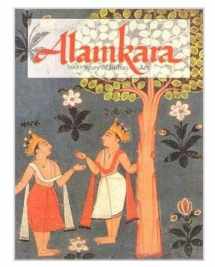
Alamkara: 5000 Years of Indian Art
ISBN-13:
9789971917777
ISBN-10:
9971917777
Author:
Kwa Chong Guan, R C Sharma, Jagdish Mittal, Ratan Parimoo
Publication date:
2013
Publisher:
Asian Civilisations Museum
Format:
Paperback
144 pages
FREE US shipping
Book details
ISBN-13:
9789971917777
ISBN-10:
9971917777
Author:
Kwa Chong Guan, R C Sharma, Jagdish Mittal, Ratan Parimoo
Publication date:
2013
Publisher:
Asian Civilisations Museum
Format:
Paperback
144 pages
Summary
Alamkara: 5000 Years of Indian Art (ISBN-13: 9789971917777 and ISBN-10: 9971917777), written by authors
Kwa Chong Guan, R C Sharma, Jagdish Mittal, Ratan Parimoo, was published by Asian Civilisations Museum in 2013.
With an overall rating of 4.2 stars, it's a notable title among other
books. You can easily purchase or rent Alamkara: 5000 Years of Indian Art (Paperback) from BooksRun,
along with many other new and used
books
and textbooks.
And, if you're looking to sell your copy, our current buyback offer is $0.34.
Description
Alamkara is a Sanskrit word for ornamentation or decoration. This book examines ornamentation in the context of Indian objects made for use in domestic, courtly, and religious settings. Three essays and a catalogue section develop this notion. From the exhibition:The first ever blockbuster exhibition of Indian antiquities was the result of a memorandum of understanding on culture between the governments of Singapore and India. This exhibition was setup with 330 loan artefacts from the National Museum, New Delhi at the former National Museum building (now Singapore History Museum on Stamford Road). It saw 120,000 visitors entering the portals of the museum within a record time. The exhibition was accompanied by attractive crafts, food and performances which saw community participation and support.The exhibition was thematically arranged, covering 5000 years of Indian art woven around a recurrent theme of decoration, Alamkara. The first section introduced the civilisation from Indus-Sarasvati cultures through sculptural development to fully developed temple forms with sculptures displayed in their design context. The idea of ornament was developed further to explain its aesthetic and artistic meaning and ramifications in various media. A whole section on ornamentation showcased jewellery, textiles and costumes for men, women and children along with contextual paintings to elaborate their historicity.The artefacts were further divided into more lifestyle-based themes such as from pot to plate, adorning the self, the pursuit of pleasure, the heroic ideal, kings, courtiers and craftsmen, mortal women celestial lovers and streams of devotion. These sections elaborated using a collection of artefacts based on their function and usage, the ideas of food, adornment, games and leisure activities, lovers and the world of women and religions practiced on the Indian subcontinent. The star piece of the religion section was a relic of Buddha, excavated from a site called Piprawah. These relics were honorably displayed on a platform which visitors could circumambulate. A large pillared hall evoking the Ellora buddhist caves from 7th-9th century in western India was the model for the religion gallery display. A large court interior was also evoked using tent panels, quilts, cushions and umbrellas with decorative huqqas and silverware.


We would LOVE it if you could help us and other readers by reviewing the book
Book review

Congratulations! We have received your book review.
{user}
{createdAt}
by {truncated_author}


